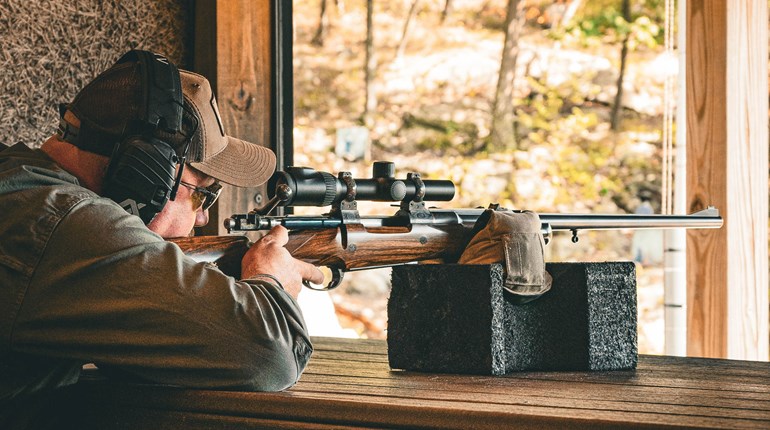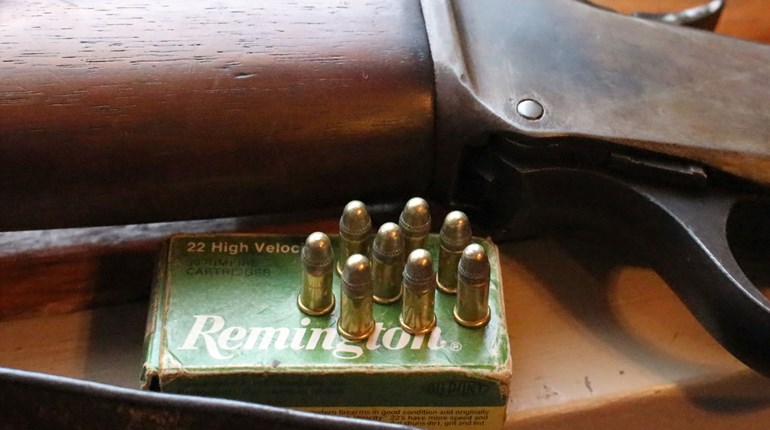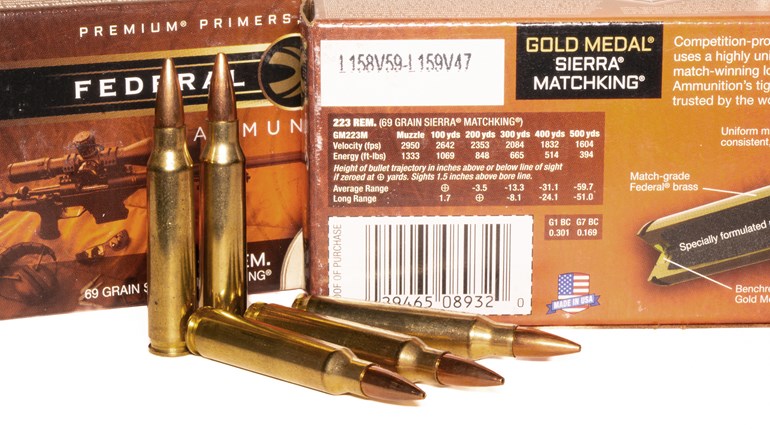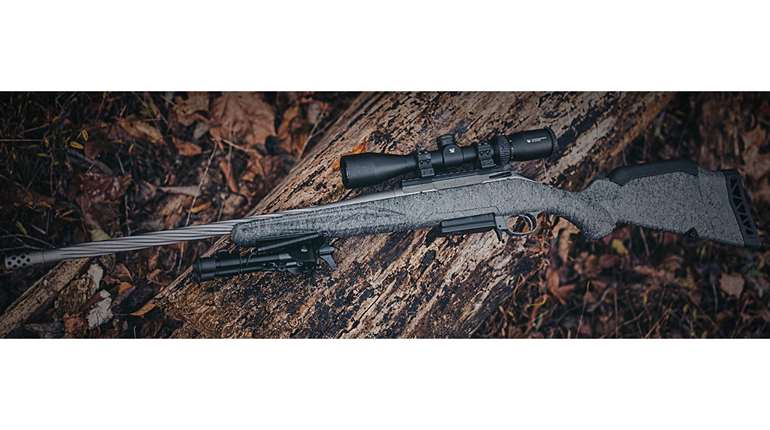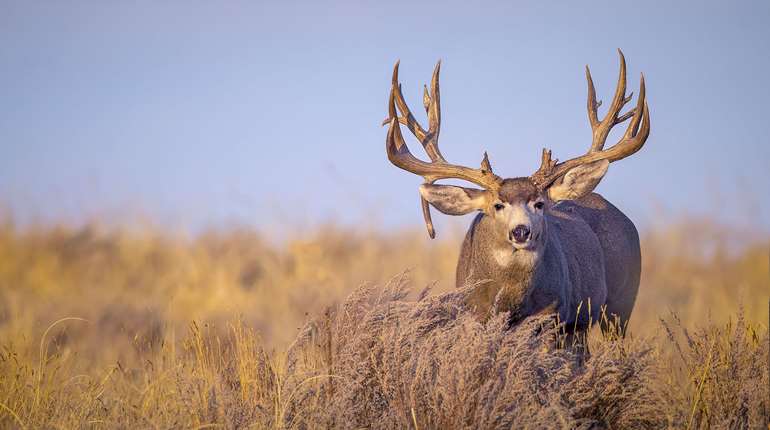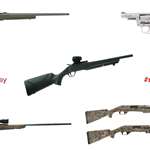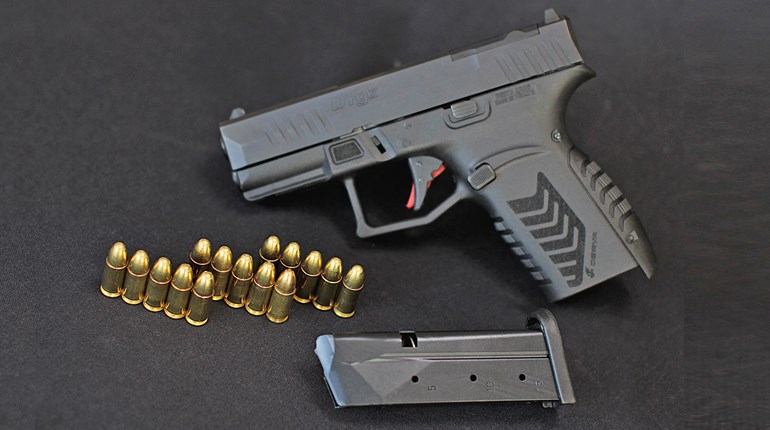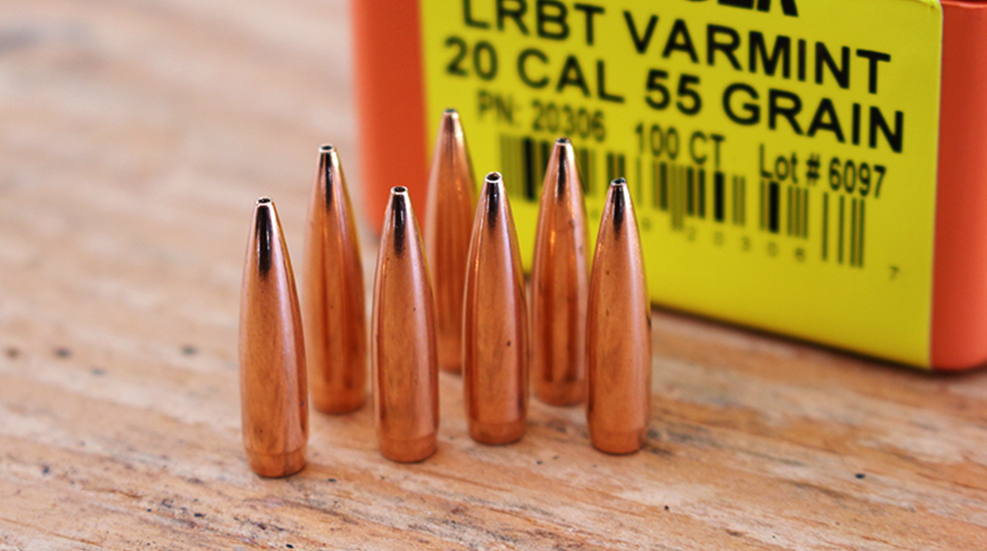
The big game seasons have concluded, and—if you’re like me—you’re getting ready for the predator seasons that run through the winter. Coyotes, foxes, bobcats and other furbearers are on the menu in my neck of the woods, and the same rifle may stay on active duty through the spring and summer, working in the woodchuck fields and prairie dog towns. If you haven’t tried any of this type of hunting, you’re really missing out, but a word of warning: it can be addictive.
The typical varmint/predator calibers run from the diminutive rimfires and .17-caliber centerfires, usually topping off at the quarter-bores or the 6.5mms. Unlike hunting big game, where you’ll want a good, stiff bullet to penetrate the larger animal, the bullets used for hunting varmints and predators are usually designed to be highly frangible for rapid expansion and energy transfer—or in the case of those who are serious about fur—a non-expanding full metal jacket. Let’s take a look at the construction and conformation of several popular bullet types to better understand the best way to dispatch your game animal cleanly.
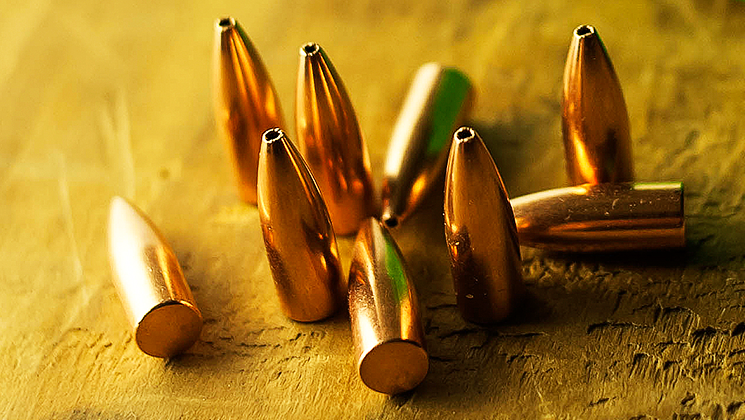
A standard, cup-and-core bullet will work perfectly for any animal in this class, including big coyotes. While the good big-game bullets generally have a thick copper jacket—designed to control expansion—the varmint bullets have a thin jacket for violent expansion. That expansion—usually coupled with a muzzle velocity on the higher side of average—is what creates the red mist that prairie dog and woodchuck hunters are so familiar with. The Sierra Varminter, the Hornady Varmint, and the Nosler Ballistic Tip Varmint all have the thin jacket that characterizes these types of projectiles. Their jackets are thin enough to provide near explosive expansion, yet thick enough to hold together under the heaviest of barrel strain. I have actually seen some bullets—being frangible and very light for caliber—disintegrate not far from the muzzle, as the fast twist rate of the rifle actually spun the copper jacket and lead core apart. This happened years ago in a .264 Winchester Magnum using 85-grain bullets, and had I not seen it, I might not believe it. Yet, with these newer developments, I’ve yet to have that issue rear its ugly head again.
There are other means of ensuring expansion, some old, some new. The hollowpoint design has been with us since the 19th century, at first to reduce bullet weight—and thereby increase velocity—but more recently as a means of guaranteeing expansion. The Speer TNT hollowpoint bullets are near explosive when they contact a target, and when it comes to varmints and predators, that’s a good thing. The Sierra MatchKing—long famous for its accuracy—makes a fantastic varmint bullet, in spite of their recommendation to avoid using these bullets on game animals. It’s the only application where I feel using a match bullet—designed for target work only—is okay. I’ve shot a number of coyotes and foxes with them, and even at the higher velocities that my .22-250 will produce, they kill quickly. I would not, under any circumstances, use them for deer or similar sized game, but they are lights out on even the larger coyotes. Barnes Varmint Grenade bullets are a different design altogether, using a copper jacket and a hollowpoint tip, but a core of compressed powdered metal for frangibility.
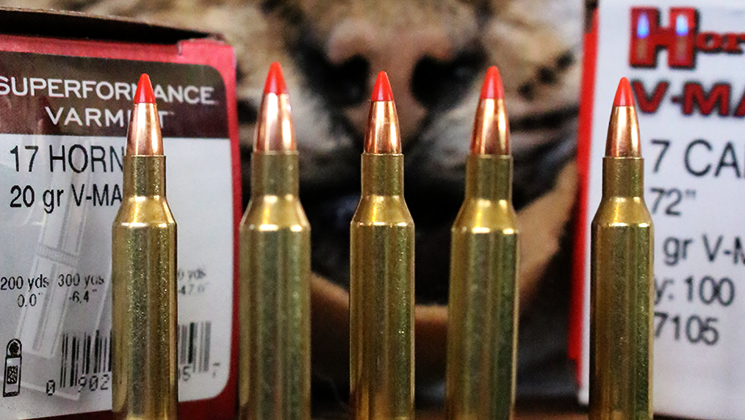
Using a plastic tip at the meplat of a bullet isn’t all that old, and it serves two purposes. Firstly, it maintains a consistent tip on the bullet—resisting deformation when being loaded and unloaded from a rifle’s magazine—to help maintain the hair-splitting accuracy needed to snipe distant woodchucks and prairie dogs. Secondly, it acts as a wedge to initiate expansion. In the heavier big-game bullets, it is a great aid at longer distances when that bullet slows down; in a varmint bullet, it opens that bullet up drastically. The Nosler Ballistic Tip, the Sierra BlitzKing and the Hornady V-Max are all examples of great varmint bullets that employ a polymer tip for expansion.
When I’m hunting coyotes or foxes for fur, I much prefer the full metal jacket bullets. They need not be expensive, so long as they group well enough in your rifle, as they will definitely save the pelt. I’ve seen the frangible bullets create fist-sized exit wounds, and if you’re trying to sell fur, this is no good. I’ve handloaded the bulk Winchester 55-grain FMJs for years, and they’ve served me very well. They tend to make a caliber-sized entry and exit wound, unless they punch a bone through the pelt.
Recent bullet trends have us all shooting heavy-for-caliber bullets to maximize Ballistic Coefficient and resist wind deflection, but you’ll find that many of the bullets designed for varmint hunting are light for caliber, to reduce Sectional Density and give that rapid energy transfer. However, at long ranges—say 300 yards and over—those light bullets will be blown all over the place. Berger’s varmint line includes some heavy-for-caliber choices, yet still delivering the terminal performance you’re after, and will make the longer shots a bit easier.
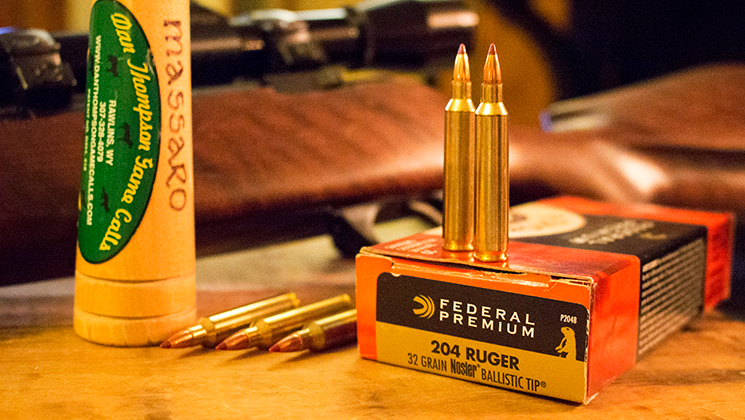
You’ll have to spend some serious range time learning the performance of your chosen load in the wind; that’s going to be the real issue. Obviously the 6mm, .25 and 6.5mm cartridges will offer an advantage—with their heavier bullets—but you’ll still need to do more training in the wind if you want to hit that coyote across the hay lot. But, if you’ve chosen a decent bullet, you’ll drop him when you do.













